The Electronic Intifada 2 August 2018
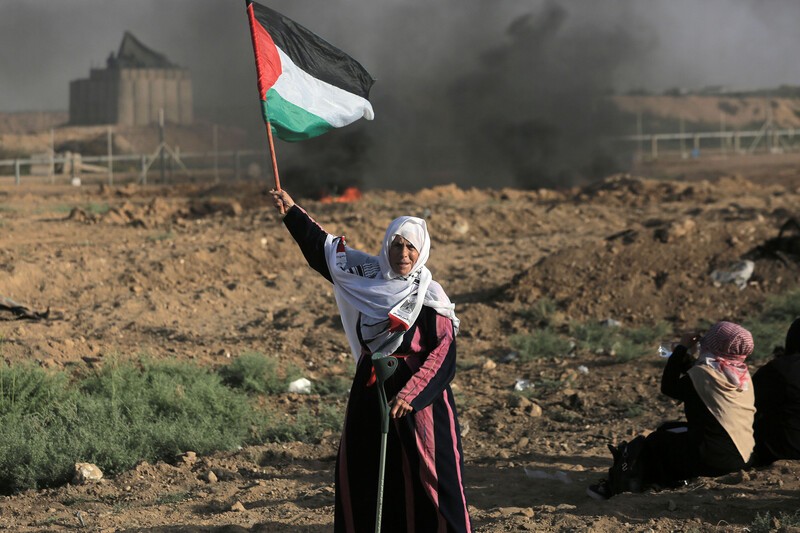
An elder waves the Palestinian flag during a women’s protest held along the boundary with Israel, east of Gaza City, on 3 July. The protest was part of the Great March of Return series of demonstrations calling for an end to Israel’s siege on Gaza and in support of Palestinian refugees’ right to return to the lands from which their families were ethnically cleansed in 1948.
ActiveStillsJuly witnessed the most dangerous escalation in violence in the occupied Gaza Strip since Israel’s summer assault in 2014.
Nineteen Palestinians were killed thoughout the occupied West Bank and Gaza Strip during the month and four more, including a child, died from their injuries after being shot by Israeli snipers during protests in Gaza in May and June.
More than 190 Palestinians have died by Israeli fire in 2018.
The shooting death of a soldier in July marked the first Israeli fatality resulting from Gaza fire since 2014. Also during the month an Israeli man was stabbed and killed by a 17-year-old Palestinian who was shot dead by an armed civilian at the Adam settlement in the occupied West Bank, bringing to eight the number of Israelis killed by Palestinians so far this year.
All but two Palestinians killed during July were slain in Gaza, most of them shot during Great March of Return protests. Six fighters with the Qassam Brigades, the military wing of Hamas, were killed in Gaza during the month.
Israeli forces and armed civilians killed eight Palestinian children in July.
Two 14-year-old boys were killed while sitting on a Gaza City rooftop targeted in an Israeli air strike.
Majdi Ramzi Kamal al-Satari, 11, and Mumin Fathi al-Hams, 16, died after they were shot during protests in Rafah, southern Gaza, on 27 July. Uthman Hillis, 14, was shot and killed during protests east of Gaza City on 12 July. Another boy, Khaled Samir Abd al-Al, 17, was shot and killed after crossing the boundary fence with Israel and setting a military post on fire near Rafah on 2 July.
In the West Bank, Arkan Thaer Hilmi Mizher, 14, was shot and fatally wounded during a raid on Dheisheh refugee camp near Bethlehem on 23 July.
Tightened chokehold on Gaza
Israel tightened its chokehold on Gaza on 9 July, halting the exit of all goods from the territory and “restricting imports to only food, medical supplies, animal fodder, livestock and fuels,” the United Nations Office for the Coordination of Humanitarian Affairs (OCHA) stated.
A week later the Israeli government “announced a halt on the entry into Gaza of fuel and cooking gas and a reduction of the permissible fishing zone from six to three nautical miles,” with the import of food and medical supplies approved on a case-by-case basis.
Israel claimed that the measures were imposed as a response to the launching of incendiary kites and balloons from Gaza, which have caused hundreds of fires, damaging thousands of acres of land in Israel.
“Should they continue, these additional restrictions risk triggering a dramatic deterioration in an already fragile situation and desperate humanitarian conditions, particularly for the health sector,” UN humanitarian coordinator Jamie McGoldrick warned at the time.
Before Israel resumed the import of fuel, hospitals had to suspend operations, reduce services and implement strict contingency measures, increasing the risk of infections among patients.
Israeli defense minister Avigdor Lieberman once again banned the import of gas and fuel to Gaza on 2 August until further notice.
Gaza’s health sector was already struggling with thousands of injuries by live ammunition fired by Israeli soldiers towards protesters during Great March of Return demonstrations that began on 30 March.
As of 3 July, more than 50 patients have had lower limbs amputated and eight had an upper limb removed. Eleven of the amputees are children, according to OCHA.
“Additionally, at least 10 other Palestinians have been left paralyzed following spinal cord injuries,” the monitoring group added.
Some 1,400 wounded are at risk of long-term disability, OCHA stated.
“These include 454 patients who suffered severe vascular injuries and 954 patients who sustained comminuted fractures, where the bone is splintered into more than two fragments and there is a higher risk of limb shortening and need for assistive devices once fractures have healed.”
Officials with three UN bodies meanwhile decried the impact of Israeli collective punishment policies on the rights of Palestinian children.
“Families cope with four hours of electricity per day in the sweltering heat. Clean drinking water is expensive and hard to find. The start of the school year in one month will be very difficult for tens of thousands of families who cannot afford basic school supplies.”
Syria
The deaths of 50 Palestinians related to the ongoing war in Syria were recorded during the month of July.
More than 30 of those deaths were of Palestinians in government detention as Syrian authorities began releasing death certificates at an unprecedented rate.
Many detainees, like photographer Niraz Saied from Yarmouk refugee camp, whose fate was revealed in July, were killed years ago but their families had not been informed until now.
Other Palestinians died in July while battling Islamic State alongside government forces.
Four members of the same family from Yarmouk refugee camp were killed by Turkish border guards while attempting to enter the country on 21 July.
Another Palestinian from Yarmouk refugee camp died while perpetrating a suicide bombing in a series of attacks in Sweida, southwest Syria, believed to have killed at least 150 people on 25 July.
Islamic State claimed responsibility for the attacks.
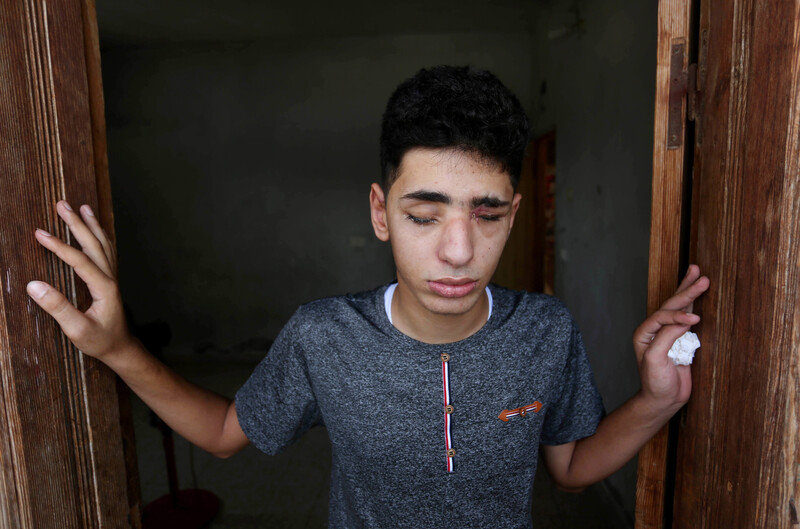
Saleh Ashour inside his family’s home in Nusseirat refugee camp, central Gaza Strip, on 1 July. The 16-year-old was blinded after being shot by Israeli occupation forces during Great March of Return protests.
APA images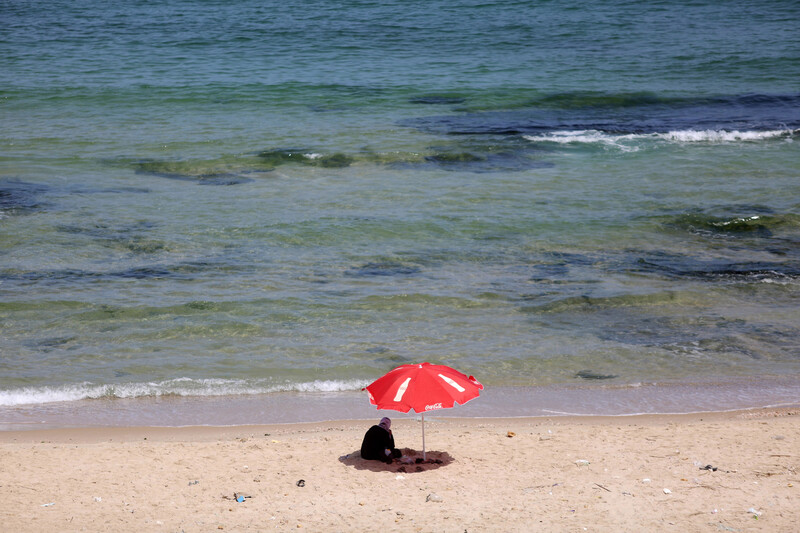
A Palestinian relaxes on the beach at Deir al-Balah, central Gaza, on 3 July.
APA images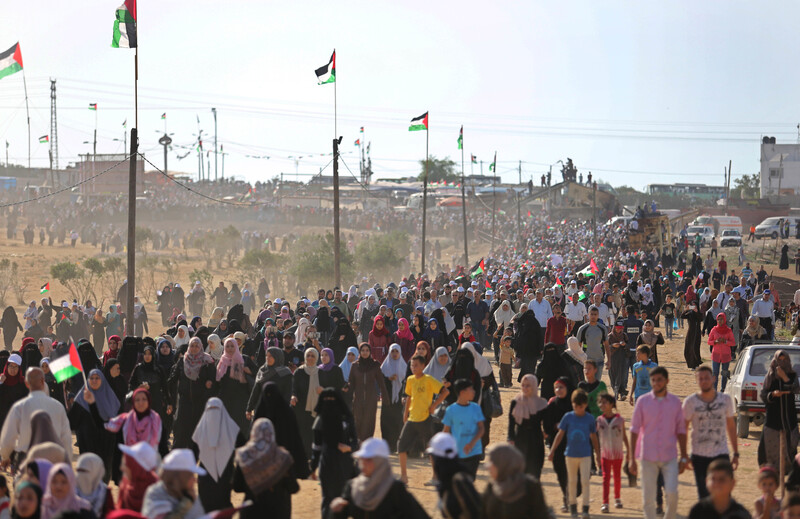
Palestinian women gather during a women’s protest as part of the Great March of Return along the boundary with Israel east of Gaza City on 3 July.
APA images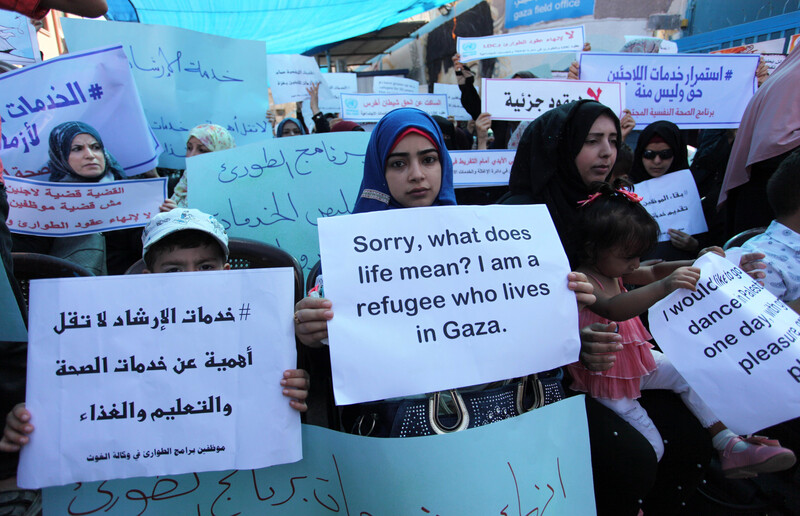
Palestinians protest against the Trump administration’s withholding of $300 million from UNRWA, the United Nations Agency for Palestine Refugees, in front of the agency’s Gaza City headquarters on 4 July.
APA images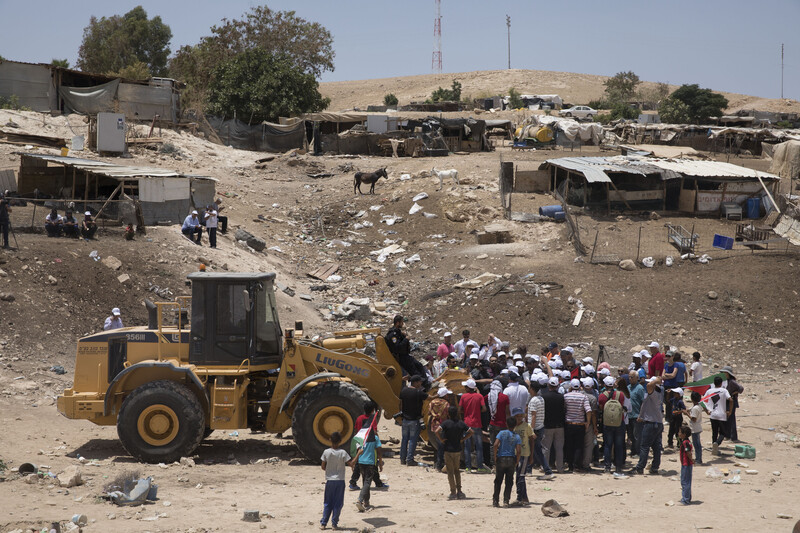
Demonstrators block an Israeli army bulldozer to prevent it from preparing for the demolition of the Palestinian Bedouin village of Khan al-Ahmar, east of Jerusalem in the occupied West Bank, on 4 July. Israel plans to imminently demolish the entire village and forcibly transfer its inhabitants.
ActiveStills
Israeli occupation forces take position during confrontations with Palestinian protesters in the West Bank city of Hebron on 10 July.
APA images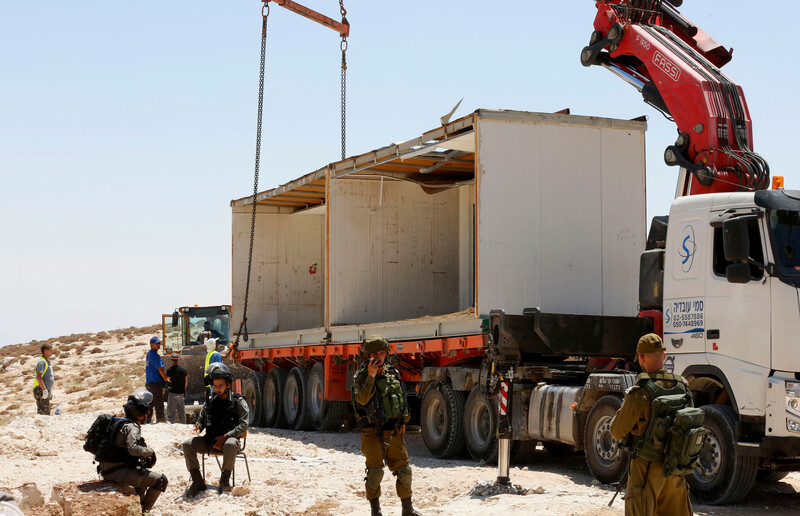
Containers used by Palestinians as classrooms are removed by the Israeli army near the West Bank city of Hebron on 11 July.
APA images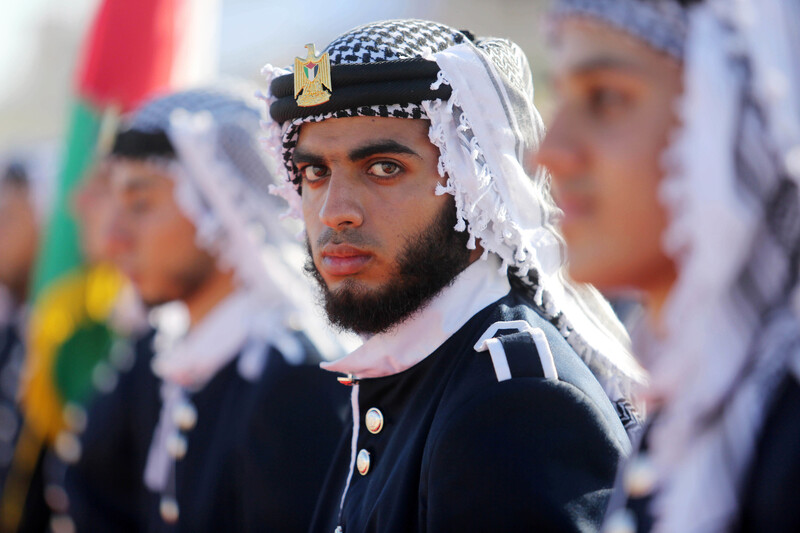
Palestinian police officers attend their graduation ceremony in Gaza City on 11 July.
APA images
Palestinian protesters gather during confrontations with Israeli occupation forces during Great March of Return protests east of Gaza City on 13 July.
APA images
Palestinian medics come to the aid of an injured protester caught in a cloud of tear gas fired by Israeli occupation forces during Great March of Return protests east of Gaza City on 13 July.
ActiveStills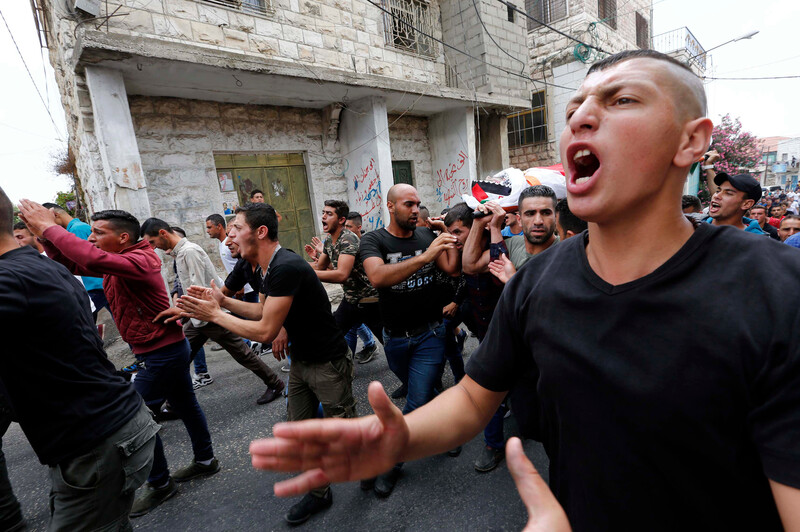
Mourners carry the body of Rami Sabarna during his funeral in the West Bank city of Hebron on 14 July. Israeli forces shot and killed Sabarna, a 37-year-old construction worker from the nearby town of Beit Ommar, on 2 June. Israel claimed that Sabarna was attempting a vehicular attack on soldiers when he was killed, though no soldiers were injured during the incident. An activist with the Hebron-based group Human Rights Defenders said that soldiers fired on Sabarna when he apparently did not hear their orders to stop the Bobcat excavator he was driving at the time.
APA images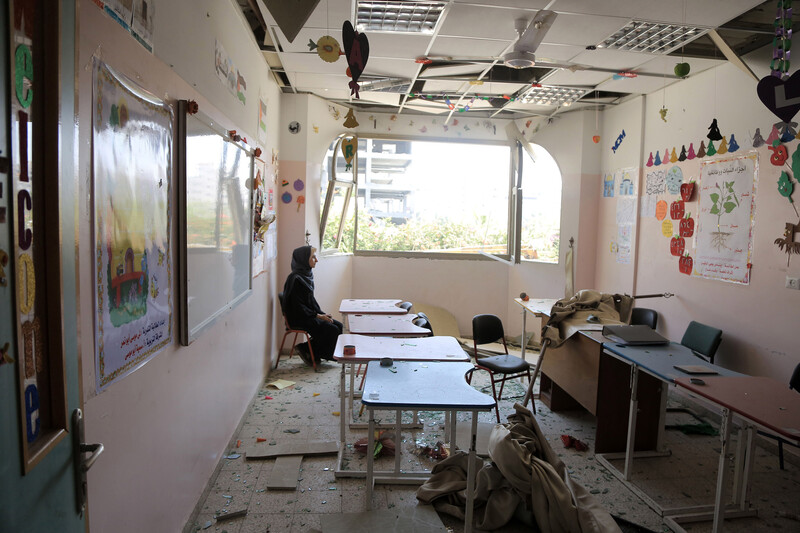
A woman sits in a classroom in the Palestine Avenir for Childhood Foundation (PACF) offices in Gaza City after it was damaged by Israeli airstrikes, 15 July.
ActiveStills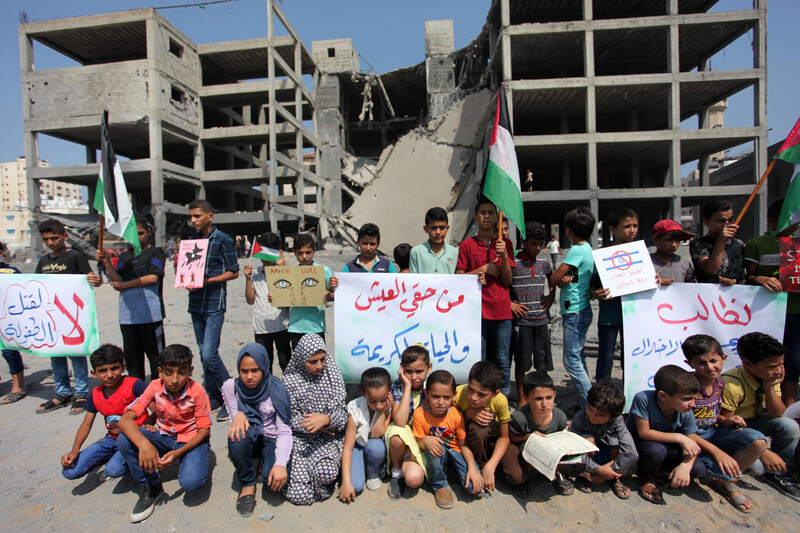
Palestinian children protest against the killing of 14-year-olds Louay Kuhail and Amir al-Nimra outside the Gaza City building where the two boys were killed in an Israeli airstrike, 15 July.
APA images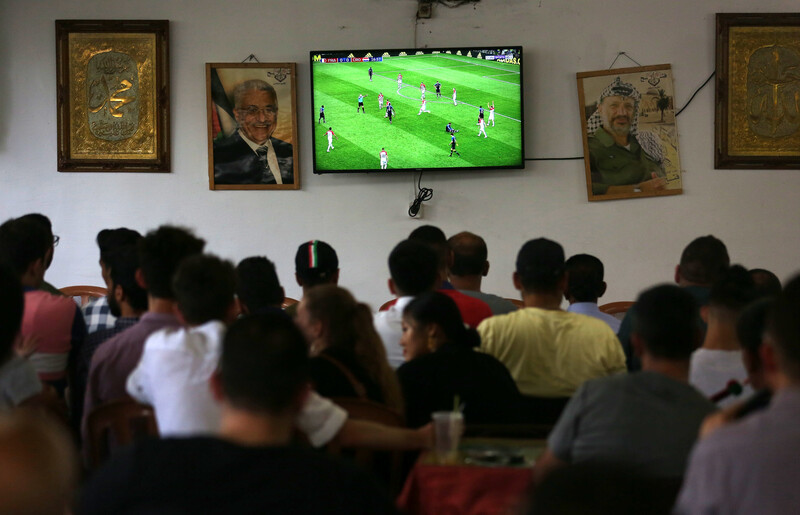
Palestinians in the West Bank city of Nablus watch the Russia 2018 World Cup final match between France and Croatia on 15 July.
APA images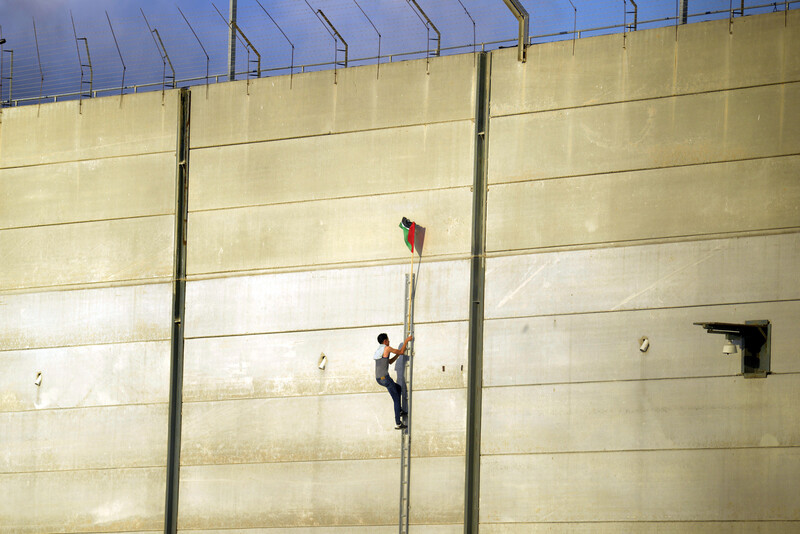
A Palestinian climbs the wall protecting the Karni checkpoint during Great March of Return protests along the boundary with Israel east of Gaza City on 21 July.
ActiveStills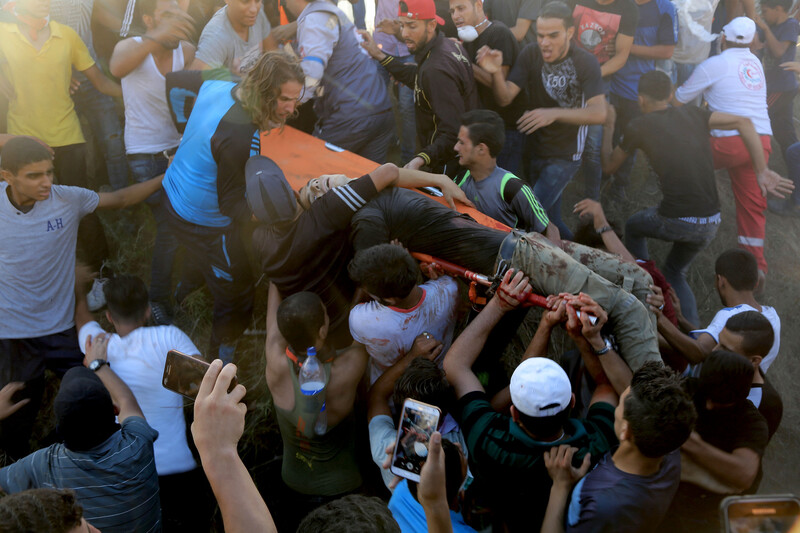
Palestinians evacuate the body of Muhammed Badwan who died after he was shot in the chest by Israeli forces during Great March of Return protests along the boundary with Israel east of Gaza City on 21 July.
ActiveStills
Palestinians protest in solidarity with prisoners held by Israel, in front of the Red Cross office in Gaza City, on 23 July.
APA images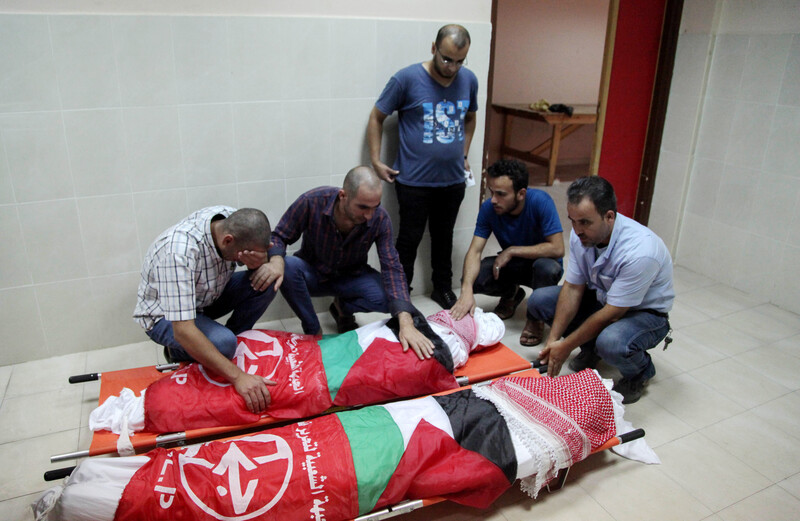
Relatives of Palestinians who were killed in an accidental explosion mourn over their bodies during their funeral in Jabaliya, northern Gaza Strip, on 29 July. The Popular Front for the Liberation of Palestine, a leftist faction, said that Ayman Najjar and Muhannad Hamouda were operatives of the group and were killed while “fulfilling their duty,” the Israeli daily Haaretz reported. The paper cited sources in Gaza who said that the men were apparently trying to launch a rocket toward Israel when it exploded prematurely.
APA images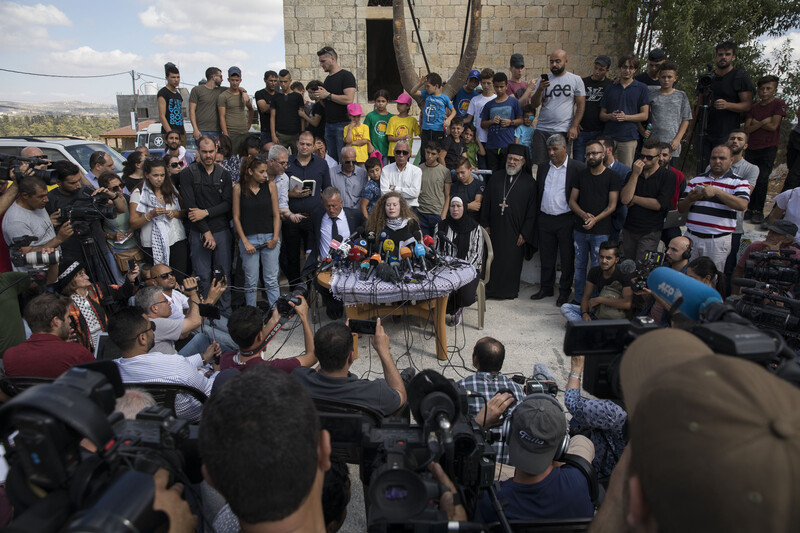
Palestinian teen Ahed Tamimi and her mother, Nariman, hold a press conference with Bassem Tamimi, Ahed’s father and Nariman’s husband, after the mother and daughter were released following eight months of Israeli imprisonment, in the West Bank village of Nabi Saleh, 29 July.
ActiveStills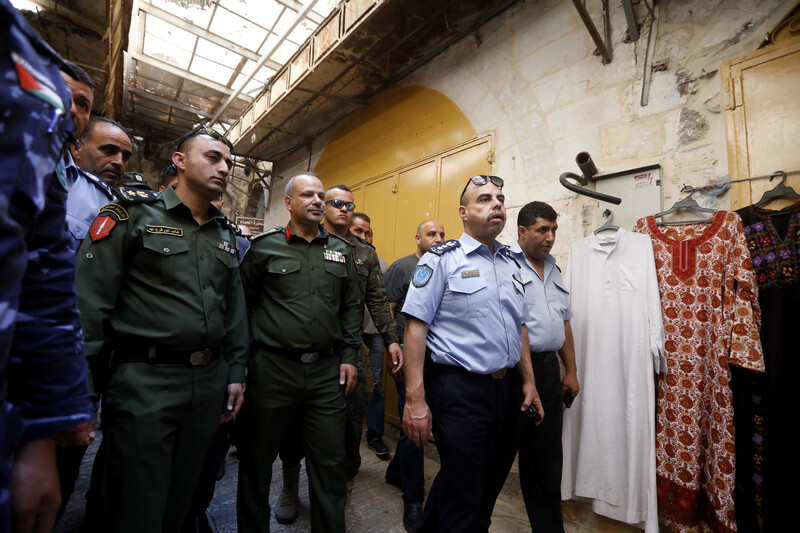
Hazem Abu Hanood, head of the Palestinian Authority security forces in Hebron, and police brigadier Ahmad Abu Rob visit the Old City of Hebron on 31 July. It was the first time since 1994 that Palestinian forces visited the Old City while in uniform and carrying arms.
APA images


